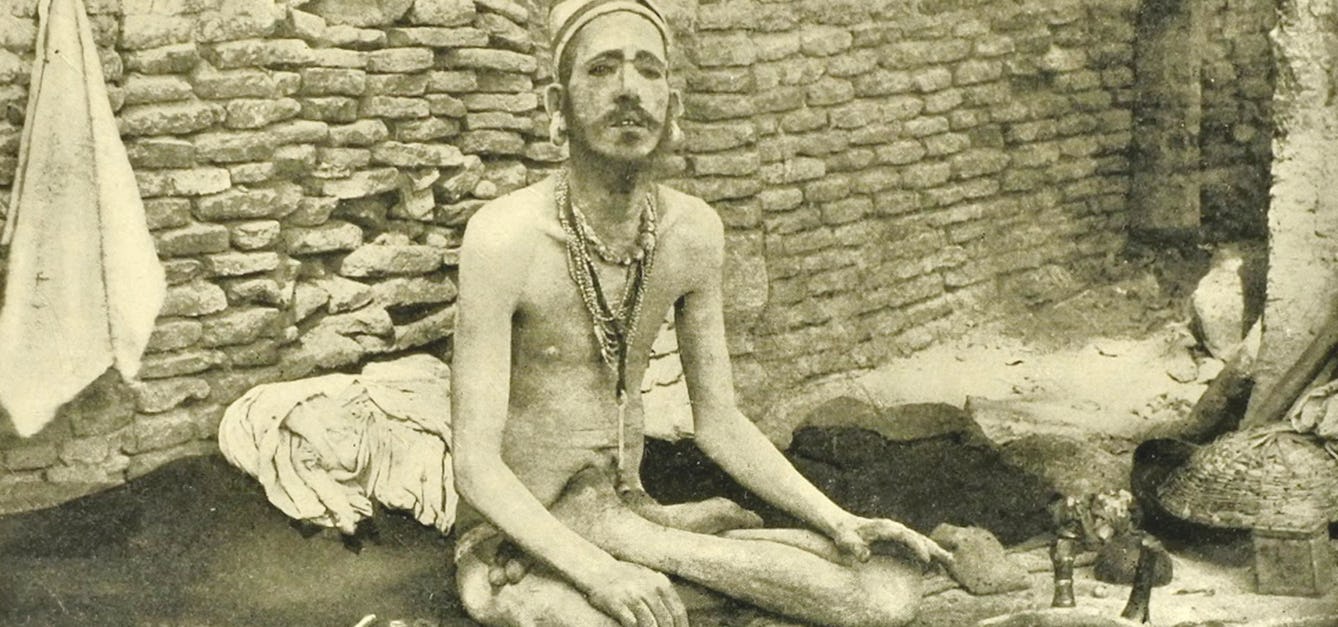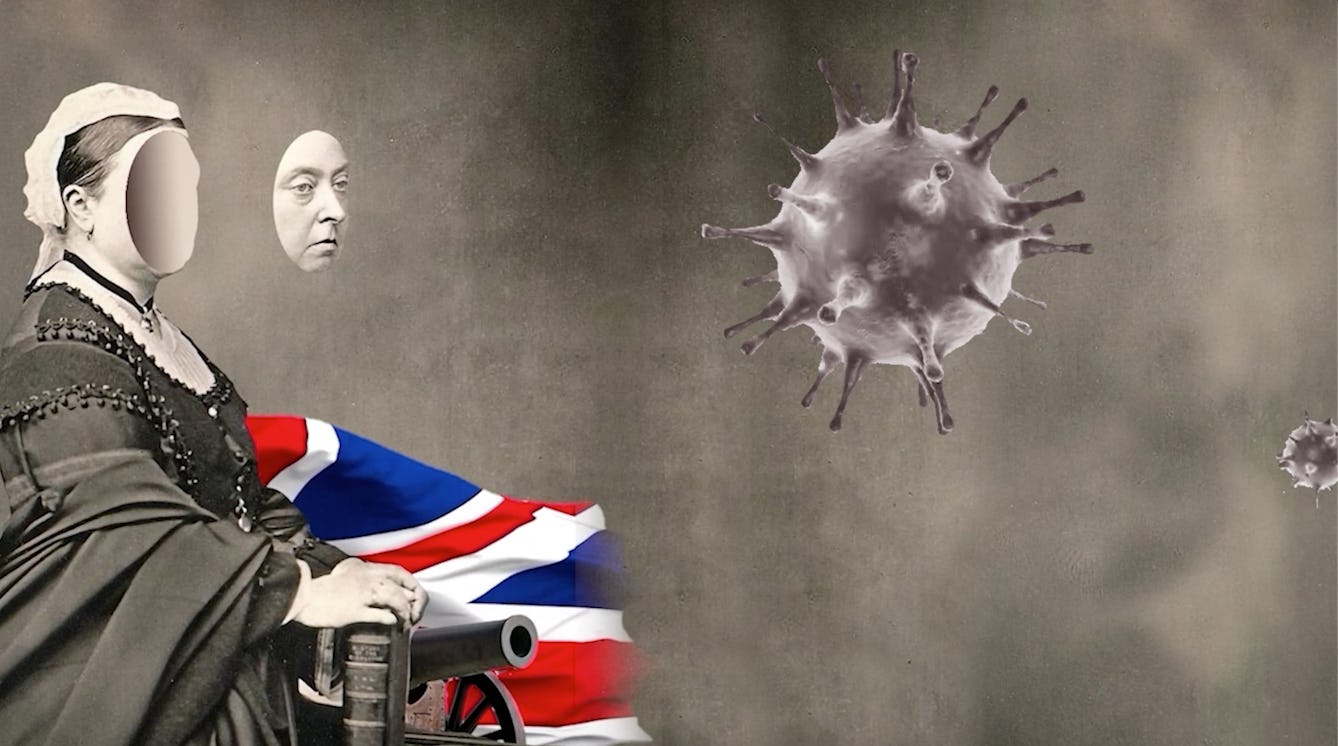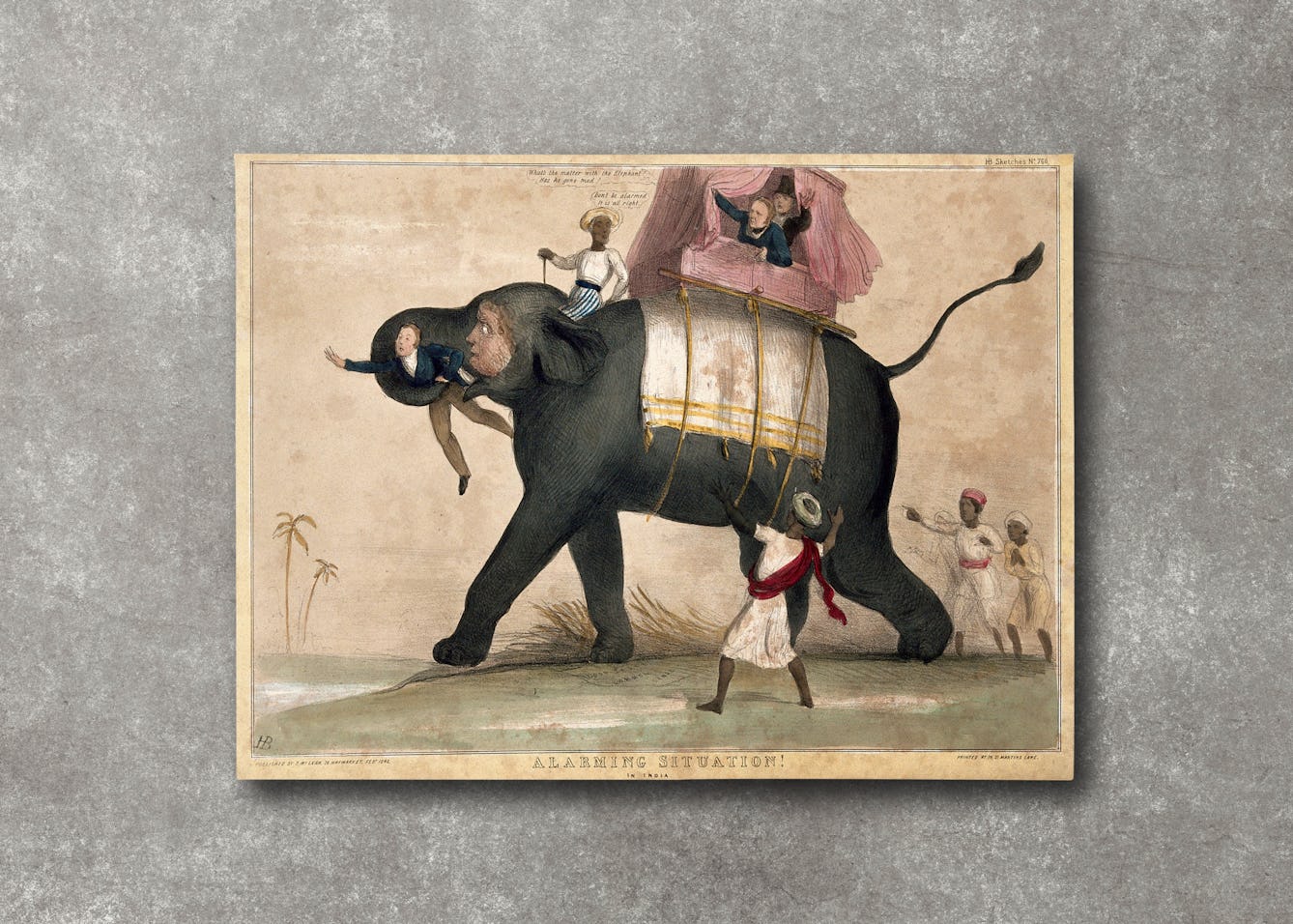Stories

- Article
The yogi as hermit, warrior, criminal and showman
How the modern world changed the life and reputation of the yogi.

- Article
Epidemic threats and racist legacies
Epidemiology is the systematic, data-driven study of health and disease in populations. But as historian Jacob Steere-Williams suggests, this most scientific of fields emerged in the 19th century imbued with a doctrine of Western imperialism – a legacy that continues to influence how we talk about disease.

- Article
Chillies and the trouble with Scoville
Measuring the heat of these peppers can leave you a little lukewarm.

- Article
Aphasia and drawing elephants
When Thomas Parkinson investigated the history of “speech science”, he discovered an unexpected link between empire, elephants and aphasia.
Catalogue
- Books
Ancient faiths and modern : a dissertation upon worships, legends and divinities in Central and Western Asia, Europe, and elsewhere, before the Christian era. Showing their relations to religious customs as they now exist / by Thomas Inman.
Inman, Thomas, 1820-1876.Date: 1876
- Books
- Online
Ancient faiths and modern : a dissertation upon worships, legends and divinities in Central and Western Asia, Europe, and elsewhere, before the Christian era : showing their relations to religious customs as they now exist / by Thomas Inman.
Inman, Thomas, 1820-1876.Date: 1876- Books
Western medical reports on Central Eurasia / Ruth I. Meserve.
Meserve, Ruth I.Date: 1997
- Books
- Online
Oriental and western Siberia : a narrative of seven years' explorations and adventures in Siberia, Mongolia the Kirghis steppes, Chinese Tartary, and part of Central Asia / by Thomas Witlam Atkinson.
Atkinson, Thomas Witlam, 1799-1861.Date: 1858
- Digital Images
- Online
Salvia nemorosa L. Lamiaceae Woodland sage. Balkan clary Distribution: Central Europe, Western Asia. Most of the historical medicinal literature is on common sage, Salvia officinalis. The name Salvia meaning 'healthy'. Elizabeth Blackwell (1737) wrote that it had "... all the noble Properties of the other hot Plants more especially for the Head, Memory, Eyes, and all Paralytical Affections. In short, 'tis a Plant endu'd with so many and wonderful Properties, as that the assiduous use of it is said to render Men Immortal" with which Hans Sloane agreed. Linnaeus (1782) also: 'Timor, Languor, Leucorrhoea, Senectus [fear, tiredness, white vaginal discharge, old age]'. Its health giving and immortality conferring properties were recorded in the aphorisms of the School of Salerno (fl 9-13th century) - quoted in the Decameron [c.1350, translated: Why should man die when Salvia grows in the Garden']. Some salvias, such as Salvia divinorum contain hallucinogenic compounds. Photographed in the Medicinal Garden of the Royal College of Physicians, London.
Dr Henry Oakeley






![Salvia nemorosa L. Lamiaceae Woodland sage. Balkan clary Distribution: Central Europe, Western Asia. Most of the historical medicinal literature is on common sage, Salvia officinalis. The name Salvia meaning 'healthy'. Elizabeth Blackwell (1737) wrote that it had "... all the noble Properties of the other hot Plants more especially for the Head, Memory, Eyes, and all Paralytical Affections. In short, 'tis a Plant endu'd with so many and wonderful Properties, as that the assiduous use of it is said to render Men Immortal" with which Hans Sloane agreed. Linnaeus (1782) also: 'Timor, Languor, Leucorrhoea, Senectus [fear, tiredness, white vaginal discharge, old age]'. Its health giving and immortality conferring properties were recorded in the aphorisms of the School of Salerno (fl 9-13th century) - quoted in the Decameron [c.1350, translated: Why should man die when Salvia grows in the Garden']. Some salvias, such as Salvia divinorum contain hallucinogenic compounds. Photographed in the Medicinal Garden of the Royal College of Physicians, London.](https://iiif.wellcomecollection.org/image/B0009180/full/282%2C/0/default.jpg)
![Cytisus scoparius (L.) Link Fabaceae. Common broom, Genista. Distribution: Western and central Europe. Culpeper (1650) writes: 'Genista. Broom: … clense and open the stomach, break the stone in the reins [kidneys] and bladder, help the green sickness [anaemia]. Let such as are troubled with heart qualms or faintings, forbear it, for it weakens the heart and spirit vital' and in respect of the flowers he writes: 'Broome-flowers, purge water, and are good in dropsies [now regarded as heart failure with fluid retention].' Photographed in the Medicinal Garden of the Royal College of Physicians, London.](https://iiif.wellcomecollection.org/image/B0008987/full/282%2C/0/default.jpg)
![Galega officinalis L. Fabaceae. Goat's Rue. Distribution: Central and Southern Europe, Asia Minor. Culpeper (1650) writes that it ‘... resists poison, kills worms, resists the falling sickness [epilepsy], resisteth the pestilence.’ Galega officinalis contains guanidine which reduces blood sugar by decreasing insulin resistance and inhibiting hepatic gluconeogenesis.. Metformin and Phenformin are drugs for type II diabetes that rely on this group of chemicals, known as biguanidines. Its name gala, meaning milk plus ega meaning 'to bring on', refers to its alleged property of increasing milk yield, and has been used in France to increase milk yield in cows. officinalis refers to its use in the offices of the monks, and is a common specific name for medicinal plants before 1600 and adopted by Linnaeus (1753). The fresh plant tastes of pea pods. Photographed in the Medicinal Garden of the Royal College of Physicians, London.](https://iiif.wellcomecollection.org/image/B0009022/full/282%2C/0/default.jpg)
![Atropa belladonna L. Solanaceae. Deadly nightshade. Dwale. Morella, Solatrum, Hound's berries, Uva lupina, Cucubalus, Solanum lethale. Atropa derives from Atropos the oldest of the three Fates of Greek mythology who cut the thread of Life (her sisters Clotho and Lachesis spun and measured the thread, respectively). belladonna, literally, means 'beautiful lady' and was the Italian name for it. Folklore has it that Italian ladies put drops from the plant or the fruits in their eyes to make themselves doe-eyed, myopic and beautiful. However, this is not supported by the 16th and 17th century literature, where no mention is ever made of dilated pupils (or any of the effects of parasympathetic blockade). Tournefort (1719) says 'The Italians named this plant Belladonna, which in their language signifies a beautiful woman, because the ladies use it much in the composition of their Fucus [rouge or deceit or cosmetic] or face paint.' Parkinson says that the Italian ladies use the distilled juice as a fucus '... peradventure [perhaps] to take away their high colour and make them looke paler.' I think it more likely that they absorbed atropine through their skin and were slightly 'stoned' and disinhibited, which made them beautiful ladies in the eyes of Italian males. Distribution: Europe, North Africa, western Asia. Culpeper (1650) writes: 'Solanum. Nightshade: very cold and dry, binding … dangerous given inwardly … outwardly it helps the shingles, St Antonie's Fire [erysipelas] and other hot inflammation.' Most of the 16th, 17th and 18th century herbals recommend it topically for breast cancers. Poisonous plants were regarded as 'cold' plants as an excess of them caused death and the body became cold. They were regarded as opposing the hot humour which kept us warm and alive. Poultices of Belladonna leaves are still recommended for muscle strain in cyclists, by herbalists. Gerard (1633) writes that it: 'causeth sleep, troubleth the mind, bringeth madnesse if a few of the berries be inwardly taken, but if more be taken they also kill...'. He was also aware that the alkaloids could be absorbed through the skin for he notes that a poultice of the leaves applied to the forehead, induces sleep, and relieves headache. The whole plant contains the anticholinergic alkaloid atropine, which blocks the peripheral actions of acetylcholine in the parasympathetic nervous system. Atropine is a racemic mixture of d- and l- hyoscyamine. Atropine, dropped into the eyes, blocks the acetylcholine receptors of the pupil so it no longer constricts on exposure to bright light - so enabling an ophthalmologist to examine the retina with an ophthalmoscope. Atropine speeds up the heart rate, reduces salivation and sweating, reduces gut motility, inhibits the vertigo of sea sickness, and is used to block the acetylcholine receptors to prevent the effects of organophosphorous and other nerve gas poisons. It is still has important uses in medicine. Atropine poisoning takes three or for days to wear off, and the hallucinations experienced by its use are described as unpleasant. We have to be content with 'madness', 'frenzie' and 'idle and vain imaginations' in the early herbals to describe the hallucinations of atropine and related alkaloids as the word 'hallucination' in the sense of a perception for which there is no external stimulus, was not used in English until 1646 (Sir T. Browne, 1646). It is a restricted herbal medicine which can only be sold in premises which are registered pharmacies and by or under the supervision of a pharmacist (UK Medicines and Healthcare Products Regulatory Agency (MHRA)). Photographed in the Medicinal Garden of the Royal College of Physicians, London.](https://iiif.wellcomecollection.org/image/B0008945/full/282%2C/0/default.jpg)